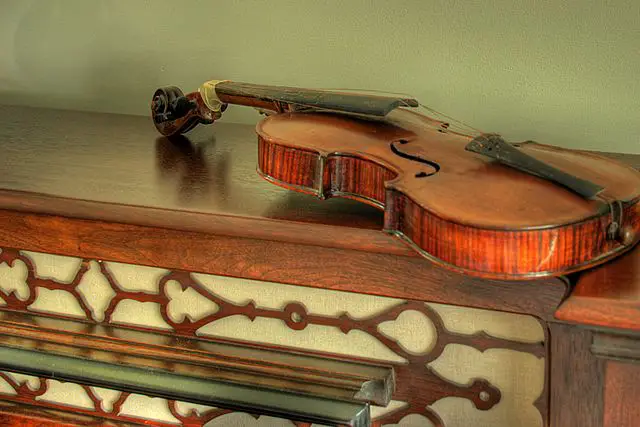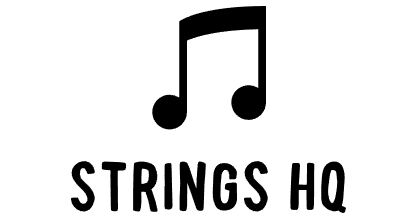Many Violin enthusiasts ask ‘Are Older Violins Better than modern Violins’. As a matter of fact, some of the oldest violins have been sold for millions of dollars. So, are older violins better?
Here’s the answer to whether older violins are better:
A lot of people believe that older violins are better than new ones due to old wood sounding better. This is because it’s been broken in, and the sound produced is warmer and deeper. Nevertheless, some of the newer violins sound exceptionally good. High-quality craftsmanship, excellent quality control, and the latest technological advancements guarantee that the produced violin will be almost perfect.
Table of Contents
What are the Differences Between New and Old Violins?
The discussion of whether old violins are better than the new ones isn’t one that’s going to stop any time soon. To answer this question, more questions arise:
Can a violinist confirm that all new violins can’t live up to the performances of the older ones? This means that he or she must have played a significant number of old and new violins to compare them and find the differences.
Since this isn’t true or applicable, the differences between old and new violins can only be explained by a few people who have actually used both.
These few violinists agree that older violins sound less harsh, more mature, and more responsive. But these sound attributes can also be found in new violins that are made by high-quality manufacturers.

What is the Difference in Manufacturing Old vs. New Violins?
Older violins came in many varieties based on where they were made. As a result, those manufactured in Italy sounded different from those made in Germany, France, Hungary, or any other part of the world. There are several reasons behind these differences.
The first one is related to the manufacturer himself. Since these older violins were 100% handmade, a manufacturer would put their personal touch by altering the traditional shape of the violin, which also affected the sound produced.
For example, Jacob Stainer designed and manufactured a violin in the early 1600s that looked narrower than a typical violin and had a high arching. This particular violin, and those made according to the same design, had a warm, deep, mellow, and sweet tone.
On the other hand, the wider violin designed and made by Antonio Stradivarius had a brighter tone, making it the perfect choice for playing music in open spaces, thanks to its incredible sound projection. As a result, the Stainer model was more popular in Italy and Austria, while German and French violinists favored the Stradivarius violin.
The other difference is related to the material. Different types of wood have been used to make older violins, and each one had an effect on the tones produced. Spruce, willow, rosewood, maple, and ebony were usually used to make violins. Newer violins are mainly made of maple or spruce wood.
The strings were made of cured animal intestines and later steel in the past. Today cheaper models feature synthetic strings.
Do Older Violins Sound Better?
To some violinists, Older Violins sound superior to new Violins.
And there are two reasons why older violins usually sound better than the new ones:
Why Do Older Violins Sound Better?
The first reason, as we explained, is that manufacturers spent a lot of time handcrafting the perfect violin. These violins were specifically made for someone or by order, so they were customized. The attention to detail guaranteed that nothing would go wrong.
In addition to the high-quality craftsmanship, high-quality wood ages well over time. When the Violin is played regularly, a long period of time will improve the acoustics of the instrument.
The second one is due to natural selection. If there’s currently a functioning violin that survived 300 or 400 years, then it’s definitely made of high-quality materials. It must also be high quality enough for the Violin to be passed from generation to generation. If the Violin sounded poor, eventually it would be disregarded or disposed of.
For example, some of the violins made by Andre Amati for Charles IX of France in the 1500s can still be played today.
But in 2014, a group of professional violinists was asked to play several old and new violins to an audience of violin makers, critics, and other musicians. They were offered 12 different violinists, including modern ones, in addition to 5 Stradivarius violins and a Guarneri del Gesu violin from 1740.
After playing these violins in a small rehearsal hall, as solos, and accompanied by an orchestra, six picked the new ones over the old ones. They found them more playable and responsive.
Try a blind sound test! This video compares 5 old and new violin sound quality with answers at the end:
How Old is An Old Violin?
As of today, a violin has to be made in 1921 or earlier to qualify as an old or antique violin.
However, many antique dealers consider any violin to be old or antique if it’s more than 40 years old.
There are still almost 600 existing violins made by Stradivarius in his Golden Period in the 1700s. Many of them are still functional and are considered among the finest violins ever made.
How Old is a Good Violin?
Those who believe that violins sound better as they age agree that a high-quality violin made of good materials will sound its best when it’s 40 or 50 years old. The older the violin, the better, as its tonal quality improves as time passes.
What is the Difference in Price Between Old and New violins?
There’s a general idea that new violins typically cost less than the older ones. But this is only true if we’re talking about a high-quality older violin.
Some of the new models are really affordable, but these are usually made of cheap materials. As a student, you don’t want to break the bank while picking a new violin, but you still need to make sure that it’s built to last. It should also be able to deliver the right tones to help you master your skills.
Many students choose to start their violin’s journey with mass-produced violins that cost less than $100. While these allow more people to gain access to this beautiful instrument, the sound quality and responsiveness of the violin will always be questioned.
We’d instead recommend going for something more well-made like the Antonio Giuliani Etude Violin. It’s made of maple wood with ebony fittings, just like the ones made by the masters. It also comes in an elegant case with all the accessories that any violinist would need to embark on their journey.
If you’re looking for something more affordable, you can check out the Mendini By Cecilio Violin. It’s made of maple and spruce and is completed with a satin oil finish to give it an elegant look.
Cheaper models might seem tempting, but they’re not recommended. Your violin won’t sound the way it should, and it might easily break.
As for old violins, the price is typically higher when we’re talking about high-quality antique models. You might be able to find an old violin at the flea market, and you might buy it for less than $500.
If this is the case, then the violin probably needs new strings or fittings, and you’ll have to spend time and money to find what actually works for it. Only a skilled violinist or violin manufacturer would be able to examine an old violin to decide if it’s worth the effort of having it restored.
This is why we wouldn’t generally recommend buying any old violin that costs less than $1000. It should be functional without any or only a few issues that you can tweak and fix on your own. Otherwise, you might end up with a violin that doesn’t sound the way it should.
Old top-quality and master violins cost a lot more. These are usually sold at antique stores or auction houses because they belong to special collections. Most of them are sold for several thousands or even millions of dollars or euros.
Are Old Violins Difficult to Find?
Not necessarily.
If you’re dealing with a reliable antique dealer, they’ll be able to guide you to online and offline auctions where you can check out some of the oldest violins available for sale. Unfortunately, some of these violins are hidden in attics or basements, and no one actually knows about them until it’s time for an estate administration.
A well-made older violin can be found in a shop. It’ll have all its fittings and accessories, and you can actually play it right there and then. However, if you want something more unique, you might have to dig a little deeper.
What is the Oldest Violin?
The oldest surviving violin was made by Andrea Amati for Charles IX of France. It was made in Cremona, and the label says that it was manufactured in 1564.
Some researchers and historians believe that this label is doubtful. Another Amati violin in the Metropolitan Museum of Art dates back to 1558. However, this date is also yet to be confirmed.
The Salabue or Messiah Stradivarius violin is one of the oldest violins to be in pristine condition. It was hardly ever played and looks as good as new. It was made in 1716 and is currently displayed at the Ashmolean Museum of Oxford.
Are Older Violins Better for Beginners?
A lot of beginner violinists ask this question “should I buy an old or a new violin?”
The choice is yours, and it really depends on the quality of the instrument and your budget.
A new violin will look good right out of the box. You don’t have to worry about any restoration work, and if you’re buying a high-quality model, it will probably deliver what it promises for a few thousand strokes without any need for maintenance or repair.
However, older violins sound more mellow. This is because they don’t require that break-in period that you’ll likely spend with your newer violin.
Nevertheless, you’ll have to consider all the restoration work to make your old violin playable. You should also make sure that you’re buying it from a good source.
Wrap Up
Older violins may sound more mellow and deeper than the new ones. But if you’re a beginner, there are a lot of good new violins that you can consider.
Make sure that you’re getting a high-quality new violin, and after the break-in period, it’ll sound just the way you want it.
